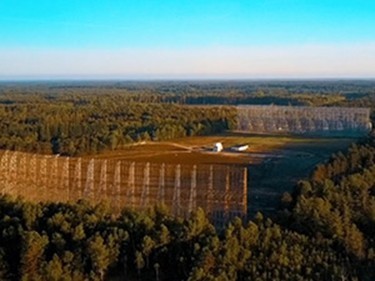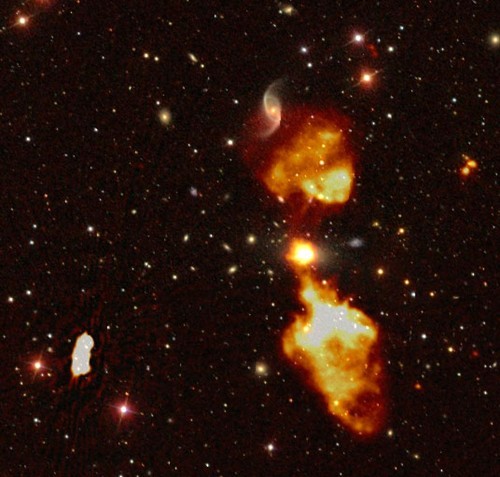Listening to the universe: the secrets of radio astronomy

Gilles Brégant, the Managing Director, and Jérôme André, Head of the ANFR Spectrum Engineering Department, gave a presentation to CRAF members on the Agency's missions and its actions in support of the development and protection of radio astronomy: an ideal opportunity to take stock of the importance of radio astronomy!
Astronomy is the science that studies celestial objects such as stars, planets, galaxies and everything else in the Universe. For thousands of years, people have observed the sky to try to understand our place in the cosmos. Traditionally, those observations were made with the naked eye or using optical telescopes that capture visible light.
The universe is "full" of radio waves
So when we think of astronomy, we often imagine optical telescopes pointed at a starry sky. But there is another way to observe the universe: radio astronomy. That discipline captures the radio waves emitted by certain celestial objects to explore the mysteries of the cosmos.
Why observe radio waves?
Light is an electromagnetic wave, like radio waves, but radio waves make it possible to see things that visible light does not. Some regions of the universe are obscured by dust clouds, or are too far away to be observed by conventional telescopes. Thanks to radio astronomy, scientists can detect invisible phenomena: pulsars, quasars, distant galaxies or the hydrogen clouds that form stars.
Frequencies, the key to listening to the cosmos
The radio waves used in radio astronomy cover a range of frequencies from a few megahertz (MHz) to several hundred gigahertz (GHz).
Radio astronomy uses two main methods to observe the Universe:
Continuum observations
These observations of radio emissions from astronomical objects in a wide frequency band mainly focus on:
- objects that emit a lot of radio waves, such as the remnants of stellar explosions (supernovas), active galaxies or very dense neutron stars (pulsars).
- the study of the hot gases or dust that also emit radio waves.
Spectral line observations
Spectral lines are specific "imprints" left in radio waves by certain atoms or molecules. This type of observation makes it possible to:
- know which molecules or elements are present in space such as hydrogen or carbon monoxide for example. The line frequencies are specific to the molecule or the observed element. For example, the 1400-1427 MHz frequency band corresponds to the interstellar neutral hydrogen (HI) line.
- to measure the temperature and density of gas clouds.
Regulations to protect radio astronomy
The main difficulty with radio astronomy is the very weak level of the signals captured on Earth or in near space once they have crossed truly astronomical distances: to be able to analyse them, they have to remain detectable by radio telescopes - which means avoiding all disruptive emissions in the vicinity of those instruments (both geographical and spectral).
The ITU Radio Regulations (RR) therefore allocate frequency bands to the radio astronomy service which are thus protected from active services.
In Study Group 7, which is in charge of the ITU's scientific services, Working Party 7D (WP 7D) is in charge of radio astronomy service studies. Those studies cover radio astronomy sensors, including those onboard satellites, and very long baseline interferometry (VLBI).
Three items on the WRC-27 agenda directly concern radio astronomy:
- 1.15 on lunar communications, considering the protection the RR provides for radio astronomy in all bands on the dark side of the Moon, which seems to be a very favourable location for the future installation of radio astronomy systems;
- 1.16, on the protection of radio astronomy in several bands and the recognition of two radio silence zones in Chile and South Africa;
- and 1.18, whose objective is to include the bands above 76 GHz into Resolution 739, which aims to protect radio astronomy from active space systems in adjacent bands.
For the subjects covering radio astronomy, WP 7D also prepares draft ITU-R Recommendations for adoption by Study Group 7. Those are a set of international technical standards developed by the ITU Radiocommunication Sector, and draft ITU-R Reports, which are technical, operational or procedural documents.
The ITU-R Recommendations and ITU-R Reports covering radio astronomy are part of the RA series.
A radio astronomy manual published in 2013 was drawn up by WP 7D and covers the radio astronomy aspects relevant to frequency coordination, such as management of the use of the radio frequency spectrum to minimise interference between radio services.
Some examples of French radio astronomy stations
- The Nançay decimetric radio telescope
The radio telescope is composed of a directional flat mirror (200 m x 40 m), which reflects the waves onto a spherical mirror (300 m x 35 m), which in turn reflects them onto the focal carriage at the centre where they are collected by cooled receivers observing in the 1 to 3.5 GHz frequency range.
- NOEMA
Located at an altitude of 2,500 metres on the Bure plateau, NOEMA(Northern Extended Millimetre Array) comprises an array of 12 individual 15 metre diameter antennas. During observations, the antennas operate as a single telescope using interferometry providing high resolution and sensitivity.

The NOEMA observatory results are sent to the IRAM headquarters in Grenoble, more than a hundred kilometres north of the Bure plateau, via optical fibre.
- LOFAR
LOFAR (LOw Frequency ARray) is an interferometer comprising more than 100,000 antennas in Europe. Each station is composed of a set of large radio antennas of which the combination of received signals is used to recompose images of the low-frequency radio sky. The pointing is done using digital processing.

LOFAR is composed of a set of stations (around fifty) shown in the figure below, including one in Nançay, France, which can operate as an array.

Below is a LOFAR image of a radio galaxy superimposed on a conventional optical image of the night sky:
- NenuFAR
Installed at the Nançay site, NenuFAR is a large phased array of 1,824 antennas (60,000 m²) used for low-frequency measurements. In addition to its autonomous measurement functions, it is an extension of the Nançay LOFAR station, making it possible for the whole system to produce radio images of the sky at a resolution of less than 1 arcsecond.
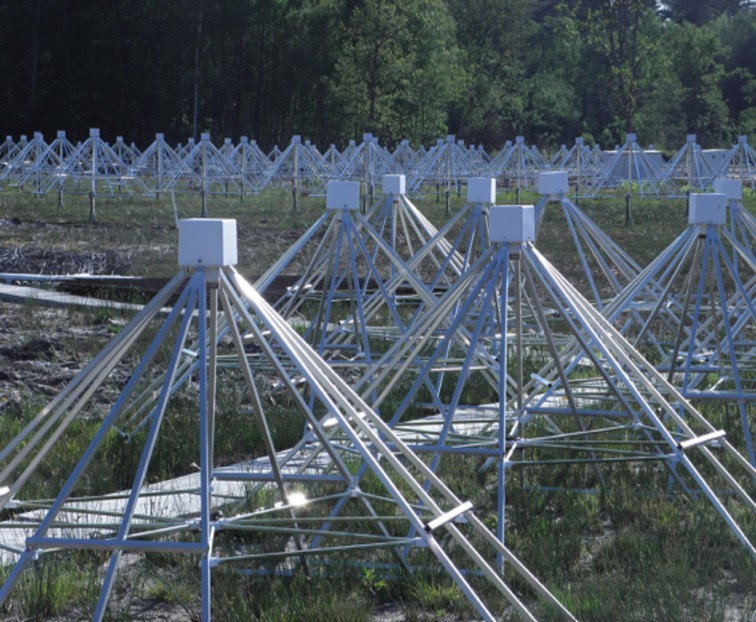
- VGOS : a global radio telescope network to listen to the universe
The VGOS (VLBI Global Observing System) illustrates worldwide scientific collaboration, linking stations on every continent to operate as a single planetary "super telescope". It is an international network of radio telescopes designed to combine the performances of VLBI (Very Long Baseline Interferometry) stations. The system will make it possible to refine our understanding of the Earth’s structure and measure its dynamics, and to improve the accuracy of very high-resolution astronomical observations. France will soon be taking part in the process thanks to an observatory based in French Polynesia.
The principle is based on several VLBIs pointing at the same emitting source in space:
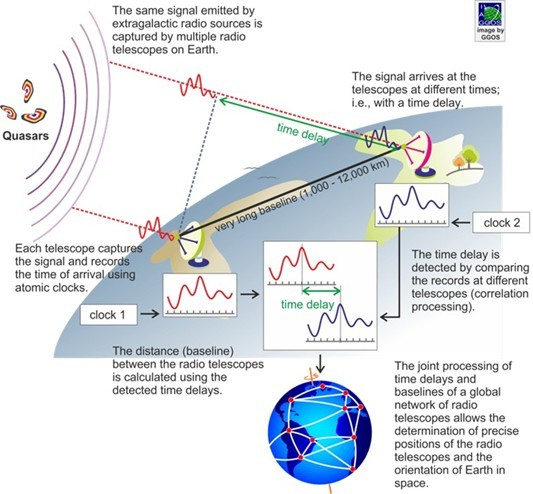
The various VLBI stations are distributed in that way to provide worldwide coverage.
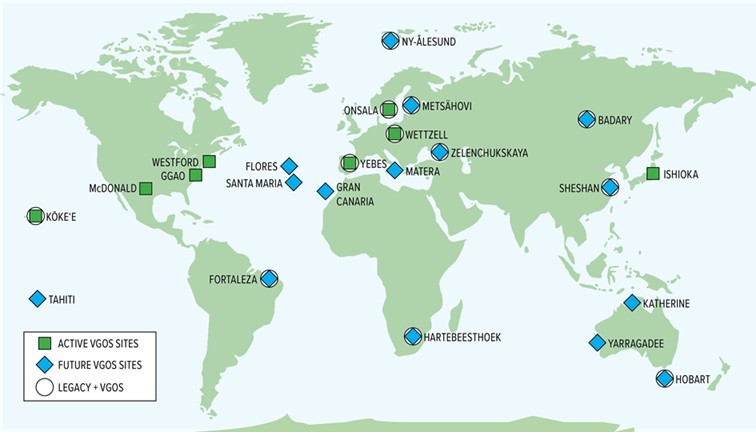

Some of the world's largest radio astronomy stations, ...
- FAST :
Despite the dismantling of the Arecibo radio telescope in Puerto Rico (made famous by several scenes starring James Bond in Golden Eye), other large-scale radio astronomy stations are operational or under development. The FAST observatory in China, for example, uses a 500 metre diameter antenna. It operates in the 70 MHz to 3 GHz frequency range and observes neutral hydrogen (HI) emissions at 1.42 GHz, the frequencies used to study pulsars at low frequencies and by fast radio bursts.
- ALMA :
ALMA is a large-scale scientific facility located in Atacama, Chile in the Andes mountain range at an altitude of 5,000 m, comprising sixty-six antennas. The main array has fifty 12-metre diameter antennas used together as a single telescope based on the interferometer principle. It is completed by a compact array of four 12-metre diameter antennas and twelve 7-metre diameter antennas. ALMA's sixty-six antennas can be arranged in different configurations, and the distance between antennas can vary from 150 metres to 16 kilometres. Like NOEMA, ALMA is capable of observing the Universe at millimetre and sub-millimetre wavelengths at high sensitivity and high angular separation power.
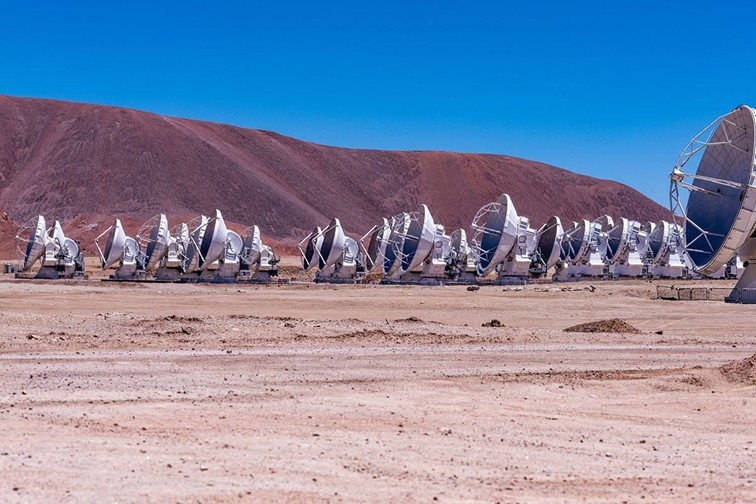
- SKAO
Square Kilometre Array observatory must be composed of two systems:
- In South Africa, with 197 directional antennas operating on the interferometry principle installed over an area covering 33,000 m2, with a maximum distance of 150 kilometres between antennas...
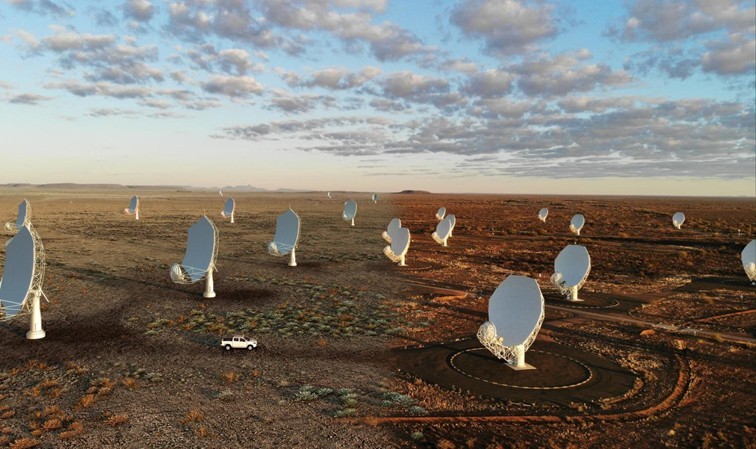
In Australia, 131,072 antennas spread across 512 stations covering an area of 419,000 m2 with a maximum distance between stations of 74 kilometres.

SKA-Low is sensitive to low-frequency radio signals between 50 and 350 MHz. Those are the weakest signals which have travelled for billions of years and have been 'stretched' to longer wavelengths by the expansion of the Universe. In radio astronomy, the sensitivity of a telescope depends on the collecting surface available to pick up signals from space. SKA-Low has a collection surface area of 400,000 m2, which means that even the weakest signals can be detected, combined and enhanced in a way that was never previously possible, thanks to a technique known as aperture synthesis. High resolution means sharper images that reveal finer detail.


